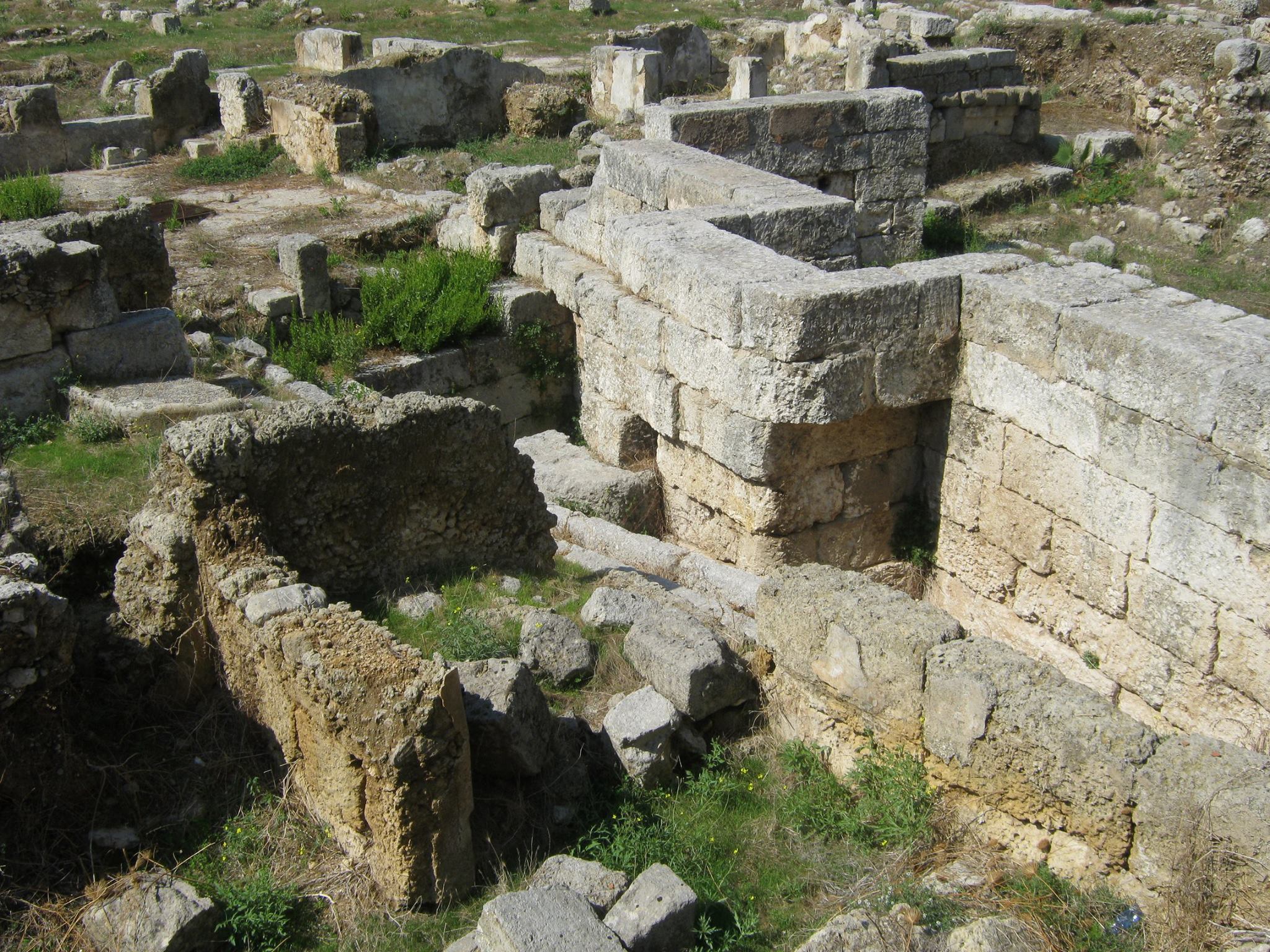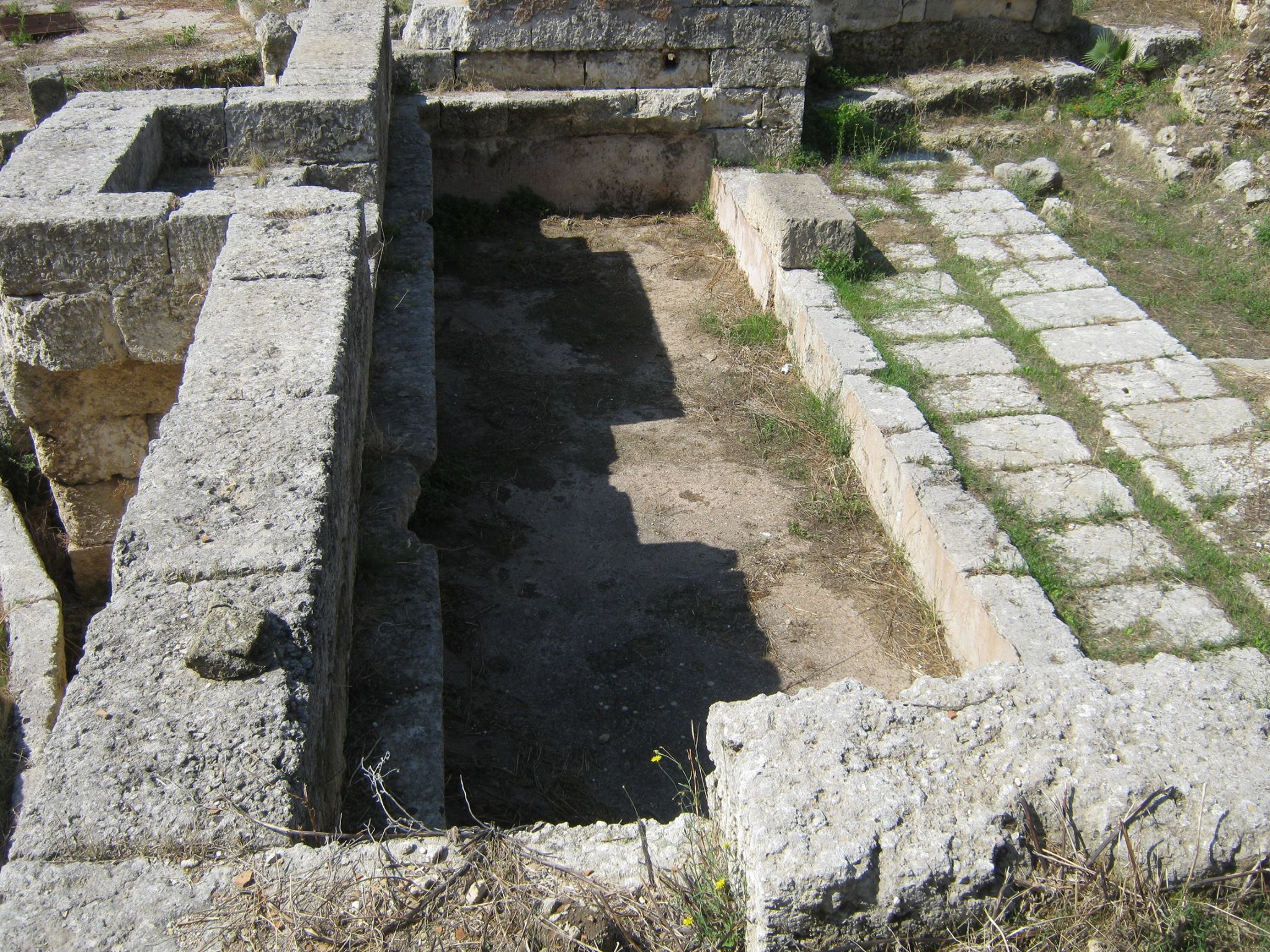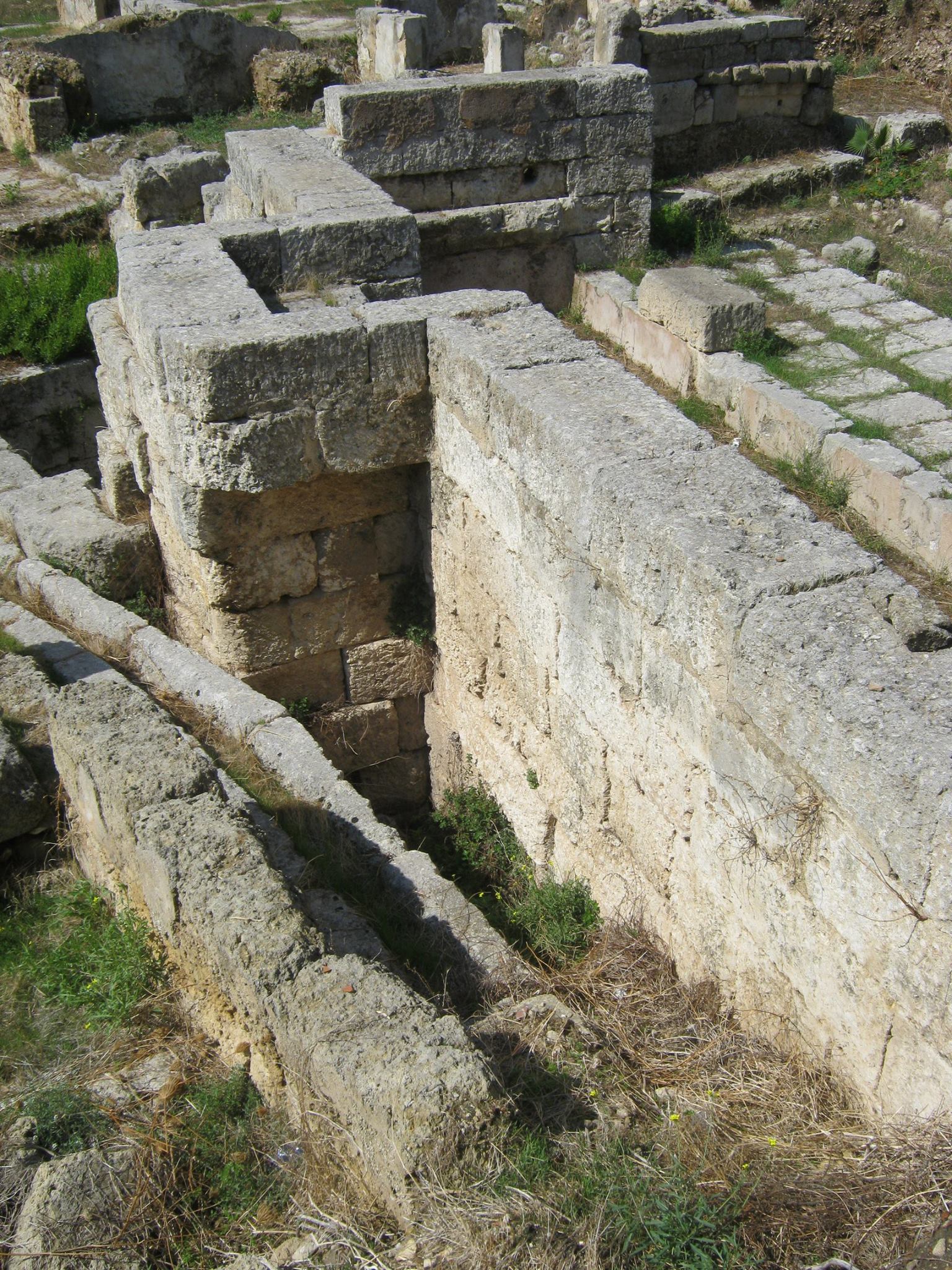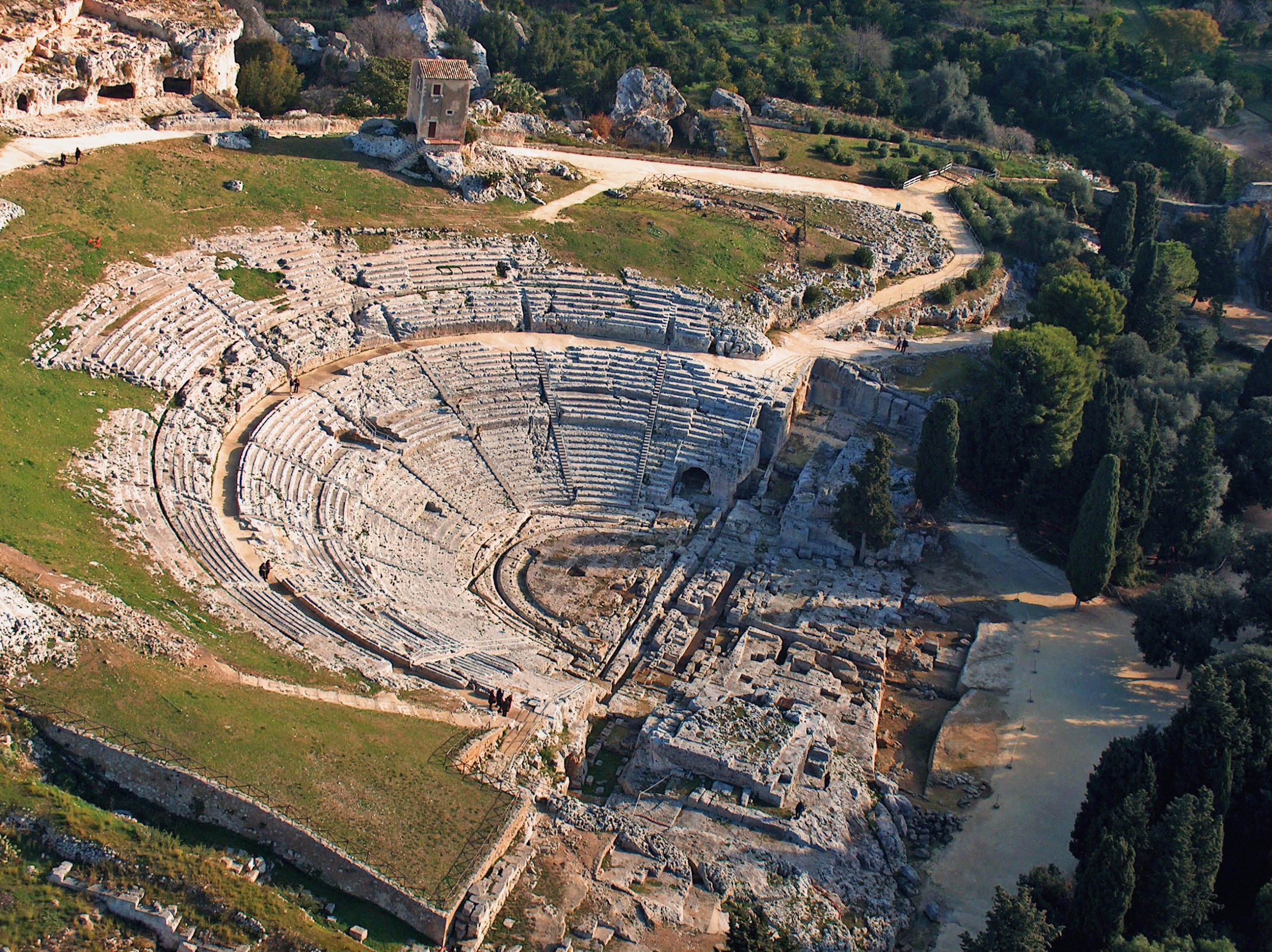During the sixties, while excavations were underway for the construction of the Santuario della Madonna delle lacrime, archaeological remains were found dating back to a period that goes from the seventh century BC. C. until the Byzantine era (VI century A.D.), in Piazza della Vittoria – the Sanctuary Demetra e Kore.
Traces of the paved road that Cicero mentioned in his “Verrine” connecting the heart of the city with the necropolis of Fusco were also found. To the south of this “paved road”, the records indicate the presence of a sanctuary. In fact, the foundations of a temple and an altar, dedicated to Demeter and Kore, were found on the site, from which emerged a large number of coins, statues, squares, vases, with the symbols typical of the cult Demeter-Kore.

Despite the state of abandonment in which it is left by the authorities responsible for its protection and conservation, the area is of exceptional importance and deserves much more exposure to both the public and tourists who usually ignore its existence.
Located west of the city walls that protected the district of Akradina, was close to a waterway now lost, the ancient stream San Giorgio, whose lower course before flowing into the Porto Piccolo, marked the eastern limit of the inhabited area. The completely rocky and uneven area was affected by an extensive necropolis from the archaic age until the fifth century BC and some graves are visible in the area of the adjacent Sanctuary of the Madonna delle lacrime.

It was in the fifth century that the Temple dedicated to the chthonic deities of Demeter and Kore was built, as confirmed by the remains of the foundations, by a break into the rock that defines the position of the altar, as well as by the many votive statues in terracotta depicting Demeter, with his usual attributes, the torch and the piglet, which were found there.
An element of great interest is also represented by the presence of a rectangular basin fountain, probably dating back to the third century, as well as by the superimposed basins of a road dating back to the centuries that go from the first century BC to the third century AD.

THE ARCHAEOLOGICAL AREA OF THE SANCTUARY OF DEMETER AND KORE IS NOT ACCESSIBLE BUT IT CAN BE ADMIRED FROM THE OUTSIDE.


